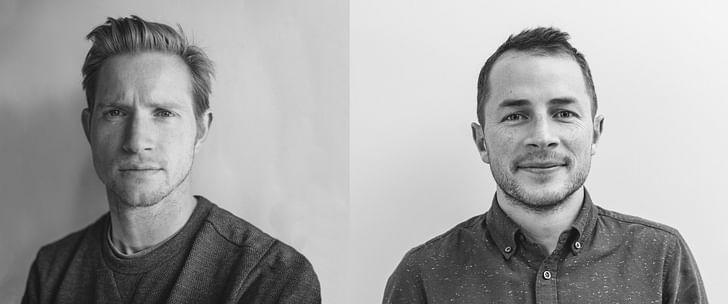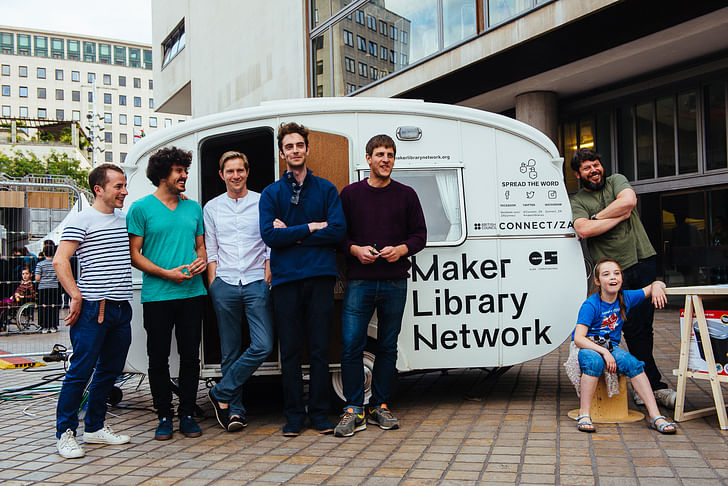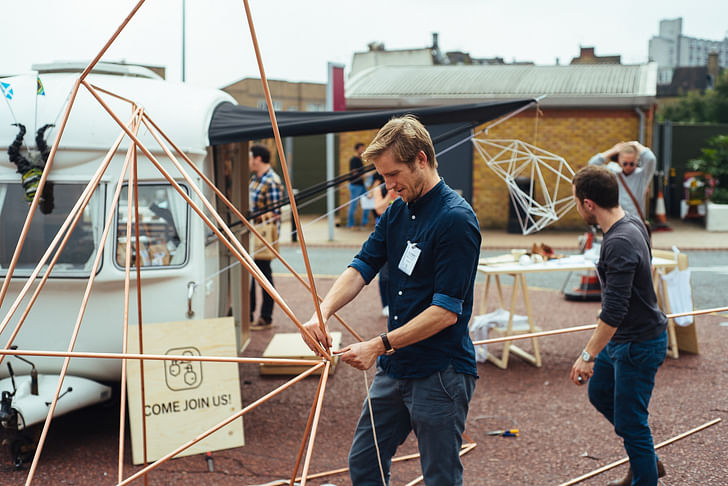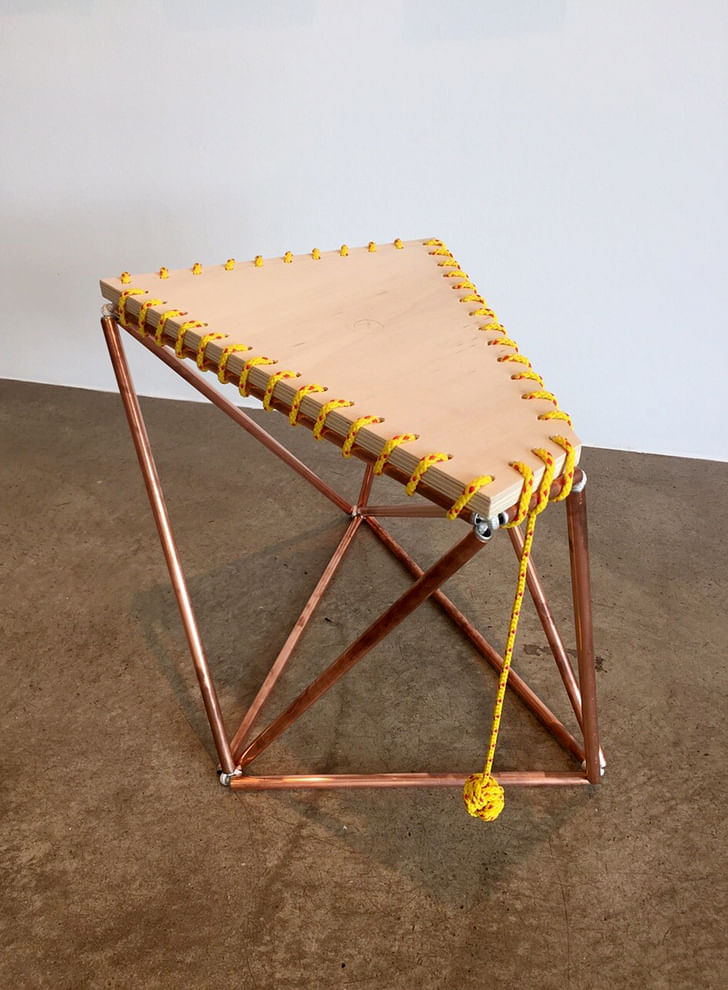

While they were both still studying architecture at the University of Strathclyde, Gunnar Groves-Raines and Stuart Falconer decided to set up a design practice at the same time: GRAS. The no-small-feat was made a bit easier by Gunnar’s father, who allowed GRAS to attach its office to Groves-Raines Architects, his own architecture practice in Edinburgh.
Despite the shared space, the two practices in the family are clearly distinguished from one another. Over at Groves-Raines Architects, heavyweight architectural conversation accompanies a portfolio that includes A-listed Scottish castles, whilst GRAS collaborates with artists on products and works on educational centres, libraries and theatres.
But meeting them in the shared studio, GRAS show that despite the generational change in focus, the two practices work well in collaboration and their own brand of architectural design-thinking stands up on its own. And whilst GRAS focuses on design, an architectural flavour is very much evident in all that they do.

“People come to us for the explorative approach," says Falconer. "Equally someone will come to the Groves-Raines Architects side of the building for conservation, but then when they want to adapt their building for new uses, we’ll find ways of doing that alongside,” explains Falconer. A prime example of this, Gayfield Creative Spaces, is an arts hub in Edinburgh set in a former tyre depot comprising of venues, workshops, galleries and studios.
it’s much more about being part of a network of makers and designers on a global scale“Groves-Raines Architects tend to have more private individual clients, whereas our side can be bodies, such as The British Council, whom we’ve just been working with on a Maker Library Project,” explains Gunnar Groves-Raines. It’s “a very different project, in some ways, even to a building project: it’s much more about being part of a network of makers and designers on a global scale to developing things like this—,”
Groves-Raines picks up a maquette of what looks like a crofter’s cottage from the table, explaining that the model is for a Danish client who is currently developing a luxury wilderness retreat spread over properties scattered across a large area of land in North Scotland. “The client has done this type of project many times in Africa, but it's a completely different scenario when you've got 90 miles an hour winds and horizontal rain coming at you. It's not quite the same," notes Groves-Raines, adding, “there’s a lot more glass used in our design.”

Here GRAS are working with their family counterparts, old-school and new-school working, it appears, in harmony. From afar the property will look like a series of crofter’s cottages. However the architects working with GRAS have dug down into the earth so a substantial amount of space has been opened up to triple the accommodation space, whilst maintaining the original character and quality of the site.
We’ve always tried hard not to be pigeonholed by falling into the very typical fields of the architectI suppose as a company, as a whole, it’s quite a good example of how we work together,” Falconer adds. “It’s the restoration of a historic building, faithfully, so to speak, then contemporary additions in a manner that are appropriate to the situation and its context with the weather: a balance between faithful restoration and contemporary design.”
GRAS call themselves a design studio, how loosely or tightly defined is that?
“We’ve always tried hard not to be pigeonholed by falling into the very typical fields of the architect,” says Groves-Raines. “We've tried hard to get involved with other disciplines, we've collaborated with artists, when we can, we're becoming increasingly concerned with exploring making processes, or indeed making things ourselves. We've been making products to find ways of self-creating at an accessible level.”


“We are still evolving, we’re very much about exploration and testing new ground,” explains Falconer. “You’ve constantly got to look at yourself and ask, ‘why are you doing it?’ But we know there is a consistency there trying to produce excellent design.”
Why did GRAS choose to be in Edinburgh, a city widely considered to be conservative, over their college hometown of experimental, devil-may-care Glasgow? “We were in Glasgow for five years, on the border of Merchant City in the East End, near where the Collective Architecture studio is based,” explains Groves-Raines. “We learnt a few hard lessons when we started out, we managed to move here just before recession hit and we were given the opportunity to share a space here.”
“For Edinburgh, I think Leith is closest to the atmosphere of Glasgow's East End," says Falconer. "There are a lot of empty buildings here, so it lends itself to people being able to do more creative things without the risk of upsetting people.”
Over lunch, we talk about future projects, and the conversation turns to their ambition to set up creative enterprises in Leith. We talk about mixed-use space, workspaces, galleries, maker libraries. Their eyes light up as they show me plans for a brilliant near-future creative development they’re working on, still under wraps. Needless to say, the plan would be a welcome addition to the creative and architectural community in Leith. If anyone is capable of sensitively conserving the architectural profile of the area, whilst shaping spaces for contemporary creative practice, it’s GRAS.
Robert studied fine art and then worked in children's television as a sound designer before running an art gallery and having a lot of fun. After deciding that writing was the overruling influence he worked as a copywriter in viral advertising and worked behind the scenes for branding and design ...
No Comments
Block this user
Are you sure you want to block this user and hide all related comments throughout the site?
Archinect
This is your first comment on Archinect. Your comment will be visible once approved.